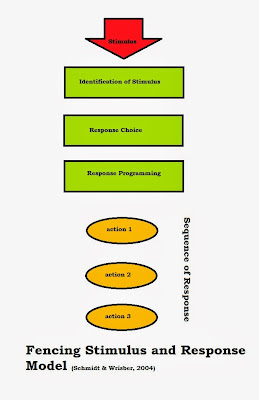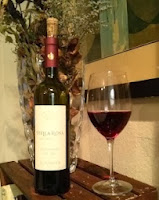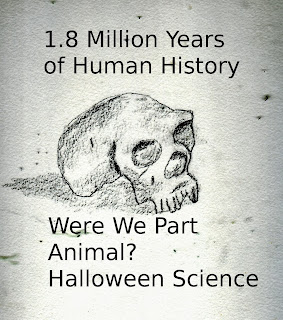Song: I know where I am going
Modern Saber Fencing by Zbigniew Borysiuk moves into
great depth about the sport of saber. It provides a discussion of fencing
history, electronic scoring, modern saber, fencing nutrition, research on
fencing, fencing talent, diagnostic tools, reaction, and information
processing. The book offers scientific knowledge of fencing and has been
reviewed by doctors and Olympic coaches to bring cutting edge information to the sport. It
is a great book for those who may want to take their fencing from recreation to
competition some day. It provides all of the basic information one needs to
move down that path.
There is an interesting chapter on fencing and
information processing. It discussed the concepts of stimulus detection,
differentiation, recognition and identification. Stimulus detection is the perceptual
moment when a stimulus occurs (i.e. opponent’s movement). Differentiation is the understanding of the
different types of stimulus (i.e. movement and location) Recognition affords
the opportunity to detect and differentiate with a coordinated learned activity
(i.e. the type of activity by opponent). At the highest level is identification that
once the specific action is recognized different types of activities can be used
to respond (parry leads to counter parry and five possible alternative actions).
 As stimuli move into one’s plane of perception it is
identified (see above) and then the player can choose a learned response. The
quality of the response is based upon the programming of training. At times the
player can choose a single or multiple responses. When a player can create a
complex chain of responses he/she is seen as more of a master of the game.
Success being in control of the game and ensuring you understand and have
responses to activities in multiple ways. The more learned and ingrained varieties of
movements, the better the player.
As stimuli move into one’s plane of perception it is
identified (see above) and then the player can choose a learned response. The
quality of the response is based upon the programming of training. At times the
player can choose a single or multiple responses. When a player can create a
complex chain of responses he/she is seen as more of a master of the game.
Success being in control of the game and ensuring you understand and have
responses to activities in multiple ways. The more learned and ingrained varieties of
movements, the better the player.
All responses from stimuli can be learned except
acoustic. This is why new players are wilder in the game but those that
understand the signals have more concise and less wieldy responses. A player
has begun to master the game when he/she can overcome automatic responses and
moves more closely into learned responses. These learned responses come from
thousands of hours of practice. Understanding movements and ensuring
proper form is necessary for future success when actions are ingrained.
Unlike some other sports, fencing is highly cardiovascular
,like running or swimming, and develops very refined sense of stimulus
detection. A single wrist movement or adjustment of body posture can tip off
the opponent to the next action. For example, while fencing last night the more
skilled player with 20+ years of experience could tell when I was going to
lunge. He was able to even point out how my front leg became tenser just before
the attack. He used his experience to wait until I was in a full movement and
then countered with a strike. Likewise, he noticed by the end of the first bout
that I had good reaction times and decided a defensive stance with coaxing my
actions worked best. This type of awareness cannot happen unless one has
watched and practiced many endless hours of fencing.
If you desire to know how the three bouts turned out
it was 5-0, 5-0, and 5-1. The single point I scored was from taking his advice,
falsely tensing my leg, making a small action forward, waiting for his counter,
and then striking him in the upper left shoulder. Sometimes you have to feel
good about the little victories when you are learning. It only worked once!
Borysiuk, Z. (2009). Modern saber fencing. NY: SKA SwordPlay Books ISBN
978-0-9789022-3-0




